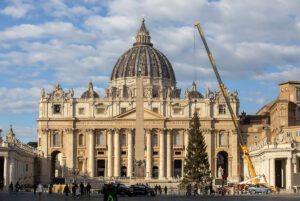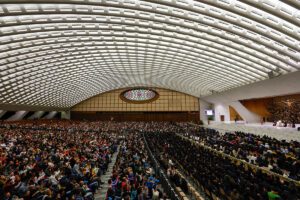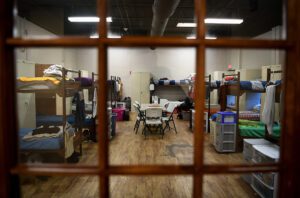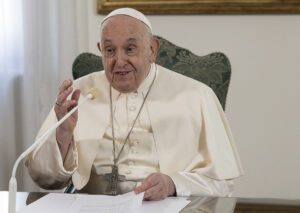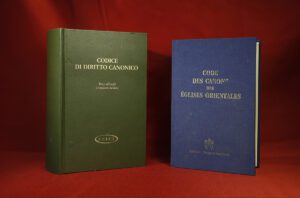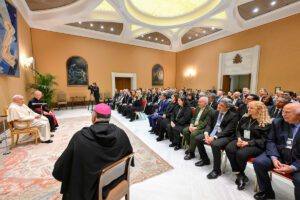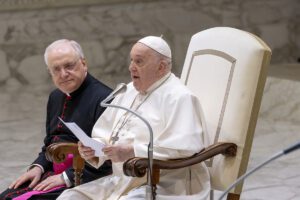WASHINGTON (OSV News) – The U.S. Supreme Court said Dec. 13 it would take up a case concerning the abortion pill, the first major case involving abortion on its docket since the high court overturned its previous abortion precedent last year.
Back in June 2022, the Supreme Court issued its Dobbs v. Jackson Women’s Health Organization decision, which overturned Roe v. Wade and its related precedents that made abortion access a constitutional right. The Dobbs decision returned the matter of regulating or restricting abortion back to the legislature.

The timing of the abortion pill case could result in the court issuing its decision next summer amid the 2024 presidential campaign.
A coalition of pro-life opponents of mifepristone, which is the first of two drugs used in a medication or chemical abortion, previously filed suit in an effort to revoke the U.S. Food and Drug Administration’s approval of the drug, arguing the government violated its own safety standards when it first approved the drug in 2000. The FDA has argued the drug poses little risk to the mother in the early weeks of pregnancy.
A federal judge in Texas ruled April 7 to suspend the U.S. Food and Drug Administration’s approval of mifepristone, but that ruling was later blocked by the Supreme Court, which left the abortion pill on the market while litigation proceeds. That decision froze the lower court’s ruling to stay the FDA’s approval of the drug.
Following the 5th U.S. Circuit Court of Appeals’ ruling limiting access to mifepristone — rolling back the FDA’s regulations expanding access to the drug while not voiding its initial approval from 2000 — the Justice Department and the abortion pill manufacturer Danco asked the high court in September to overturn the decision.
Proponents of the drug have argued mifepristone poses statistically little risk to women using it for abortion in the early weeks of pregnancy and claim the drug is being singled out for political reasons.
However, the justices indicated their review would be of the lower court’s ruling, not the FDA’s initial approval of the drug in 2000, as they did not take up the challengers’ petition for review on that decision.
Erin Hawley, senior counsel at Alliance Defending Freedom and vice president of its Center for Life and Regulatory Practice, said in a statement, “Every court so far has agreed that the FDA acted unlawfully in removing common-sense safeguards for women and authorizing dangerous mail-order abortions. We urge the Supreme Court to do the same.”
“The FDA has harmed the health of women and undermined the rule of law by illegally removing every meaningful safeguard from the chemical abortion drug regimen,” added Hawley, who also is the wife of Sen. Josh Hawley, R-Mo. “Like any federal agency, the FDA must rationally explain its decisions. Yet its removal of common-sense safeguards — like a doctor’s visit before women are prescribed chemical abortion drugs — does not reflect scientific judgment but rather a politically driven decision to push a dangerous drug regimen.”
Some reports describe the drug as “commonly used” because most abortions in the U.S. are carried out with the drug. The U.S. Centers for Disease Control and Prevention’s abortion data from 2021, the last such report from a time with Roe still in place, showed 53% of abortions were carried out via medication. That report only surveyed legal abortions.
White House press secretary Karine Jean Pierre said in a Dec. 13 statement the ruling on mifepristone under judicial review “threatens to undermine the FDA’s scientific, independent judgment and would reimpose outdated restrictions on access to safe and effective medication abortion.”
“This Administration will continue to stand by FDA’s independent approval and regulation of mifepristone as safe and effective,” she said. “As the Department of Justice continues defending the FDA’s actions before the Supreme Court, President Biden and Vice President Harris remain firmly committed to defending women’s ability to access reproductive care. We continue to urge Congress to pass a law restoring the protections of Roe v. Wade — the only way to ensure the right to choose for women in every state.”
The Catholic Church opposes abortion, teaching that all human life is sacred from conception to natural death and that society must extend support to mothers and children.
Earlier this year, Bishop Michael F. Burbidge of Arlington, Virginia, chairman of the U.S. Conference of Catholic Bishops’ Committee on Pro-Life Activities, denounced the Biden administration’s attempts to loosen regulations around the abortion pill, saying the U.S. bishops “decry the continuing push for the destruction of innocent human lives and the loosening of vital safety standards for vulnerable women.”
“The Catholic Church has been and remains consistent in its teaching on upholding the dignity of all life,” said Chieko Noguchi, USCCB spokeswoman, Dec. 13 in a statement to OSV News. “We need to put women and families first, serve women in need, and pray for the day when ending the lives of preborn children will become unthinkable.”

